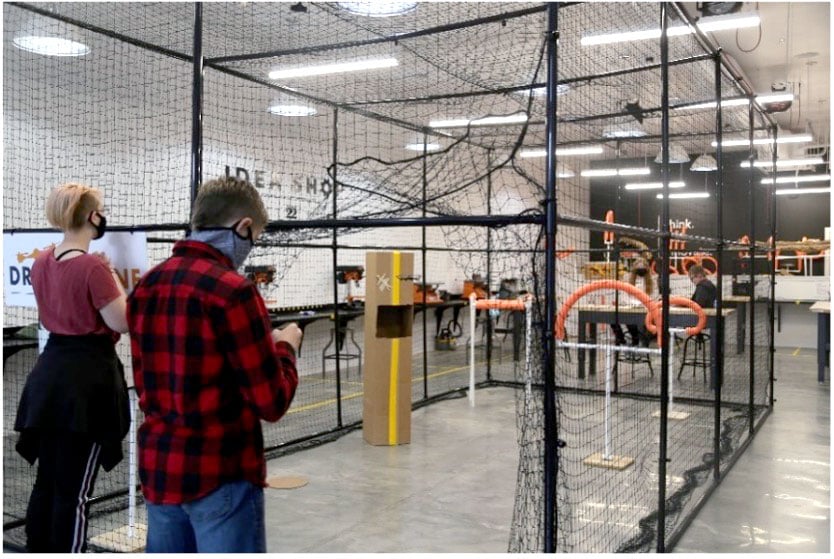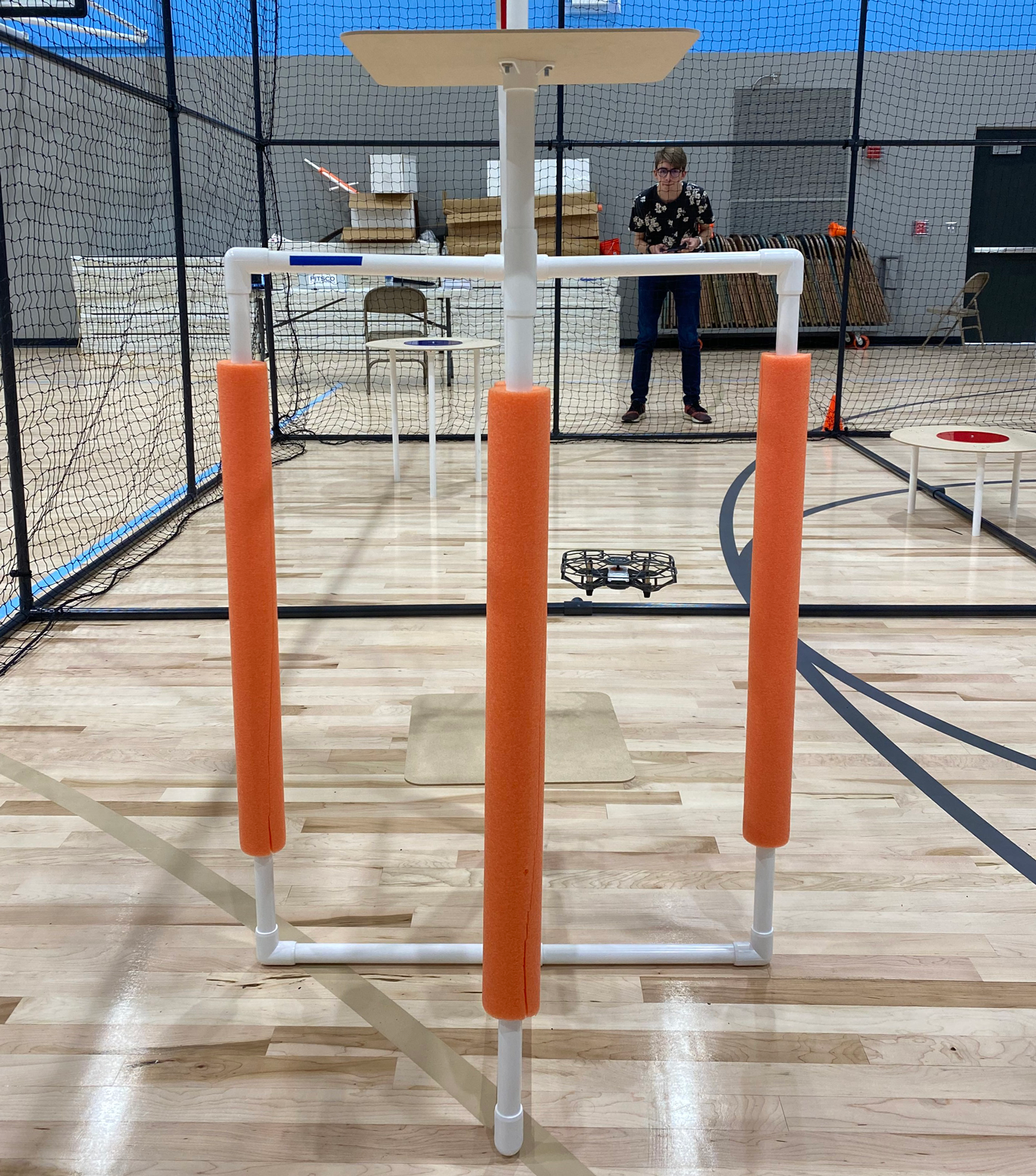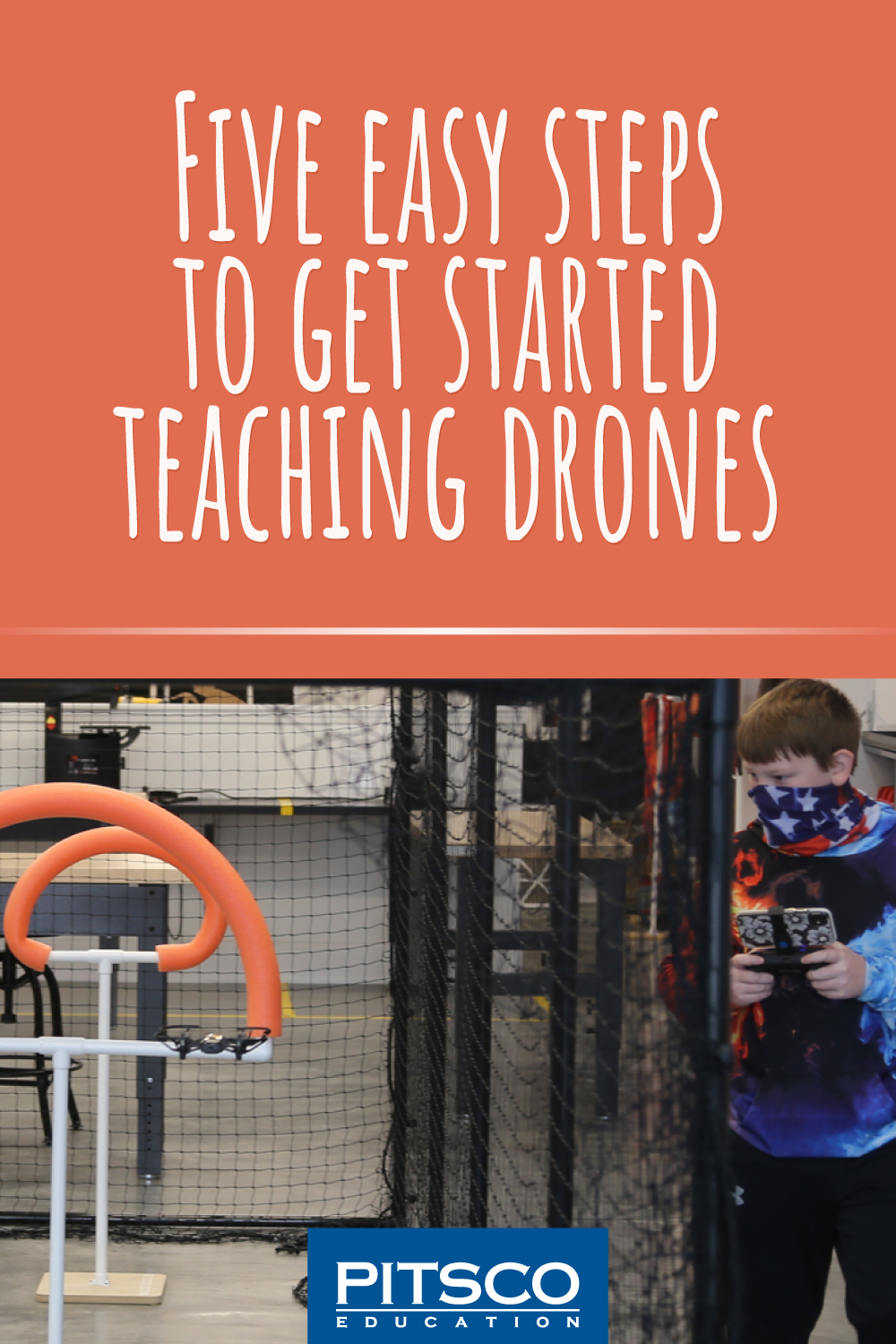Updated 6/13/24
Drones, small Unmanned Aircraft Systems (sUAS), are becoming essential tools in a wide range of industries. Agriculture, construction, real estate, filmmaking, surveying, infrastructure inspection, supply chain management, and law enforcement have all felt the impact of this technology. Naturally, this presents a golden opportunity for career and technical education.
CTE teacher Mario Malabunga is among the early adopters who have recognized this unique moment. At Hoke County High School in Raeford, North Carolina, Malabunga heads a pilot drone program that he calls “a guinea pig for the state.”
Malabunga’s background makes him an ideal candidate for the pilot program. Not only is he a seasoned teacher, but he also operates drones on the side professionally, lending his services as a drone pilot to a diverse set of clients, from farmers to realtors to contractors. His students benefit from his real-world experience and insight into this burgeoning career path.
But you don’t have to have Malabunga’s background to get in on the ground floor with drone education. Gearing up to teach new tech can be daunting – especially if you are not already an ace at using it yourself. So, with Malabunga’s help, we’ve put together a list of five easy steps for getting started with drones.
1. Start with a “beginner” drone
“For teachers with no drone experience, a good start is to get a beginner drone,” Malabunga says. “It’s like wanting to learn how to play a guitar. You have to get your instrument first. Baby steps would include getting a decent drone (small, not that expensive, durable, and reliable). Know your equipment well (hardware, software, buttons on the controller, features, and other specs).”
The Echo Drone offered by Pitsco is a great choice to get started in the world of drones. It’s a safe, versatile, and agile flyer that can be piloted with the R/C controller provided or (when you or your students are ready) automated with the block-based or Scratch coding using the app. This solution is also Section 889 compliant!
2. Learn to fly safely
Whether you are an FAA official or a classroom teacher, safety is priority number one when it comes to drones. Safety might seem like just common sense but learning from established experts will give you the protocols and checklists to keep you from getting in over your head.
Malabunga is particularly passionate on this issue.
“There are tons of YouTube videos out there on how to fly a drone, but more important to watch is how to fly safe. Unsafe flying is not cool. Start slow and low. Don’t expect to fly high and do acrobatic stuff. You don’t need to fly at 400 feet to do roof inspections or take pictures for real estate. Remember, as teachers, our goal is to teach students to fly safely and professionally.”
Of course, he acknowledges that it’ll be a learning experience. “Fear will hinder you at some point. You’ll crash, but at the least crash your drone safely. Know your surroundings and avoid flying in crowded areas. If possible, start flying in a gym or in an enclosed safe area. Fly as much as you can.”

The Pitsco drone arenas are an affordable way to ensure flight safety for your program. It offers complete visibility and room for an obstacle course! The arena can be purchased together with the Drone Flight Guide Curriculum and Field Elements Kit, a fabulous all-around package for getting started in drones education at the middle school or high school level. Learn more about our drone curriculum offerings and FAA Part 107 preparation courses here.
During Drone Safety Awareness Week, we want to ensure we’re doing our best to bring awareness to the safety precautions needed when bringing drones into a classroom. Our Commercial Drone Use Checklist was compiled to help school districts implement a drone program that will promote safe operations, limited liability, and procedures for understanding the uses and laws of drones.
3. Connect with drone enthusiasts
“Don’t be afraid to ask for help. For sure, there are people in your area that have more experience than you and it’s OK to ask for guidance,” says Malabunga. In line with this, he also suggests joining groups, organizations, or networks such as the Academy of Model Aeronautics (AMA), Aircraft Owners and Pilots Association (AOPA), Facebook groups, and local drone meets in order to educate yourself and build confidence.
“We all started small with baby steps and with the passion to learn more about the skill. I’m sure that beginner drone flyers/teachers will gain confidence soon and will be flying drones to inspire the next group of young pilots.”
4. Understand the relevance of drones
According to PricewaterhouseCoopers, the second largest professional services network in the world, drones are one of the Essential Eight technologies that’ll have a plus-size impact across industries. Business Insider has declared that drones “are still in the infancy stage in terms of mass adoption and usage.” And market research firm ASDReports has predicted that the global drone services market will reach a value of $63.6 billion by 2025.

Drones aren’t just fun; they’re becoming an essential tool for some work – and a skill set that could make your students essential workers. If you want to take a deeper dive into this topic, you can find a great list of the different drone applications in our The sky’s NOT the limit blog. You might also consider tuning into industry resources such as Dronelife and Drone Industry Insights, both of which offer free newsletters.
5. Make learning fun
OK, so we’ve established that drones aren’t just for fun. But they ARE fun. For students of the tech persuasion, it isn’t a stretch to generate excitement for what are essentially flying robots. One time-tested way to crank up the excitement in STEM even more is to get students involved in competitions.

Perhaps we should’ve mentioned this already, but Malabunga has another feather in his cap as well. Two of Malabunga’s students – Danny Pham and Riley Edwards – took first place in the national SkillsUSA® sUAS Commercial (Drone) Competition. The competition was developed through a partnership with Pitsco Education, CrossFlight Sky Solutions, MINDS-i Robotics, and the University of Florida’s Herbert Wertheim College of Engineering. Since winning the contest, Danny Pham has joined the Air Force, and Riley Edwards has declared his intention to pursue mechanical engineering, possibly with a drones tie-in. How is that for career relevance?!
Start Planning with Help
Every new technology presents teachers with a new learning curve. But if drones intrigue you, simply immerse yourself and the barriers to entry, which at first might have felt insurmountable, will quickly fall away. You’ll quickly discover you have no shortage of supporters and allies in your corner – including Pitsco.

TOPICS: IN THE CLASSROOM, Competitions, Teacher Resources, Technology, STEM, Trends, Resources, Engineering, Teacher Development, USAR, Activities, 21st Century Skills, Hands-on Learning




